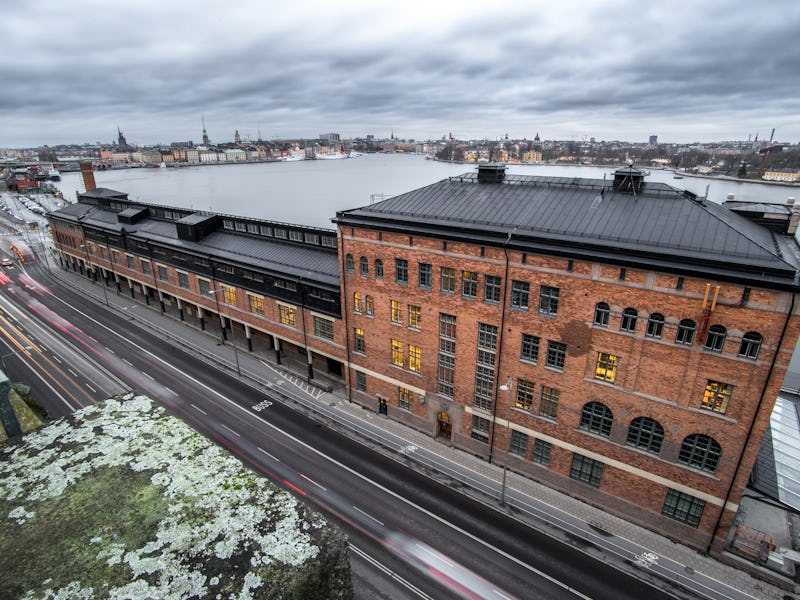Reconsidering America's Languid March to the 6-Hour Workday
Sweden is shortening its workdays. But in the States, the economics of it still look dicey.

Since humankind first decided to take a smoke break, the forces of labor, and of management, have been striving to hammer out the ideal workday arrangement. Should it be normal hours with frequent breaks? Is it inherently determined in each worker’s circadian rhythm pattern — and therefore, impossible to predict categorically? (And who can argue with the appeal of the four-hour work week?)
For many, the idea of switching the duration of the American workday from an average of eight hours to six hours is a no-brainer. Literally, as the idea streaks across our purview at 2:45 p.m., our brains — which has been working, say, in front of a computer since around 8 a.m. — is functioning at a fraction of the concentration level with which it earlier tackled the day’s affairs. (Unless we’ve deployed our work breaks more wisely, that is.)
Even in the most relaxed work environment, eight hours is a lot. Too many, in fact, goes the new line of thinking, which says the eight-hour workday is scientifically proven both not to work and to be detrimental to the health of the employee.
A meta-analysis published in the Lancet linked longer working hours to higher incidences of heart disease and stroke, and the sample size — 600,000 plus — was practically beyond reproach.
So why has the eight-hour workday persisted? Time was, eight hours was actually a major improvement over the more grueling schedule of work that typified labor during the Industrial Revolution. Only when the Fair Labor Standards Act passed in 1937 did 40 hours a week become “full-time,” an act that also required employers to pay workers overtime for any work they did that exceeded 40 hours.
That was then, and the six-hour workday is now — at least in Sweden. The Scandinavian country — these days the go-to comparison for so many American what-ifs — is switching some of its public, and many of its private, business schedules over to the six-hour workday, and seeing favorable results.
In an interview with Fast Company, Linus Feldt, the CEO of Swedish app developer Telemundus, reported positively on his company’s changeover to six-hour workdays. “I think the eight-hour workday is not as effective as one would think,” he said. “To stay focused on a specific work task for eight hours is a huge challenge. At the same time, we are [finding] it hard to manage our private life outside of work.” Sing it, Linus.
The truncation of work hours is not new, nor is it foreign-born. In December 1930, W.K. Kellogg, the cereal manufacturer, transformed his workers’ weekly schedule from three eight-hour to four six-hour shifts. Not only did this lead to fewer sick days, higher productivity, and overall happiness, it also created more work shifts and thus, the opportunity to hire more labor.
All of this would be great, “so long as its voluntary,” says law professor Keith Hylton, of Boston University. “If employer and employee want to make a deal to work only six hours, that’s one thing. But when you mandate a six-hour workday, you are, in effect, raising the cost of employment.”
In other words, by asking the employee to do more in less time, you are asking more from that employee. “For some jobs, sure, that would be fine,” Hylton says. “But for others, the argument that work will be less burdensome is a myth. My belief would be you’d have more people with no work at all.”
But what about the sub rosa agreement that employees are already working only six hours, even when they’re supposed to be working eight hours?
“That may be true, and employers will have to find some way to track that,” Hylton says. “But if you mandate a changeover to the six-hour workday, say, on the policy side, you could wind up getting employees who do four-and-a-half hours of work in six hours’ time.”
That sounds like human nature. And Hylton points out that as you send highly skilled workers home for the day, other tasks will be done by less skilled employees. Shorter days will come at a price to all involved.
“Changes in the workday can’t come from the top down,” Hylton says, until barriers to employment, payroll taxes, unemployment insurance, all those things, start to soften up. “If firms want to try the six-hour workday — and show off their better numbers, higher employee satisfaction and the like — they can.”
But until the method is proven to work in the States, Hylton remains skeptical.
“I’d like it, too. Wouldn’t you?”
The march to the six-hour workday, begun so many years ago, will have to be more gradual, and more decentralized. As Raoul Duke once said, “That’s straight economics, man.”